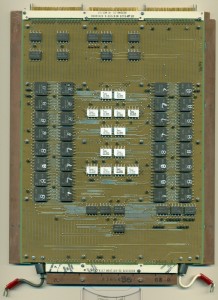Atmel Buys MHS, Again – The Twisted History of Atmel, Temic and MHS
 Today Atmel purchased MHS Electronics, a French company. Why is this interesting? Because this is not the first time Atmel has bought MHS, in one form or another. Atmel, Matra, MHS, and Temic’s histories are rather intertwined, with mergers, acquisitions and name changes occurring frequently over the last 25 years.
Today Atmel purchased MHS Electronics, a French company. Why is this interesting? Because this is not the first time Atmel has bought MHS, in one form or another. Atmel, Matra, MHS, and Temic’s histories are rather intertwined, with mergers, acquisitions and name changes occurring frequently over the last 25 years.
A Bit of History….
Atmel was founded in 1984 by George Perlegos, a former Intel employee, as a fab-less semiconductor company. Originally Atmel designed EPROM’s and PLDs. They were manufactured by Sanyo, which had an Intel license. Intel, however, sued Atmel (along with Hyundai, iCT, AAS, Cypress, and Pacesetter Electronics) over EPROM patents in 1987. The courts sided with Intel which severely hampered Atmel’s ability to make EPROM’s. Their focus then switched to non-volatile memories, such as Flash for which they have become very well known and continue to make. In 1989 they bought their own fab (from Honeywell) in Colorado Springs, CO and in 1993 released an 8051 (Intel licensed) with integrated Flash memory. This catapulted Atmel into the microcontroller market that is today one of their core businesses. In 1994 Atmel Purchased SEEQ, an EPROM and EEPROM company that Perlegos helped start in 1981. In 1995 Atmel opened a fab in Rousset, France, thus beginning the French connection.
Temic had its beginning in 1903 as Telefunken (Ironically a joint venture of Siemens and another company). In 1967 AEG merged with Telefunken and in 1985 Daimler-Benz bought Telefunken-AEG and renamed it to simply AEG. The semiconductor division of AEG was then called TEMIC (TElefunken MICroelectronics). In 1998 AEG sold TEMIC to Vishay, another automotive electronics supplier. Vishay only had interest in the discrete and power electronics portions so immediately sold the IC portion to Atmel. This gave Atmel a Bipolar fab in Germany
Matra Harris Semiconductors SA (MHS) was created in 1979 as a joint venture between Matra, the French high technology group, and Harris Semiconductor, an American semiconductor manufacturer. In 1989, Harris withdrew from the partnership, and the name was changed to Matra MHS SA. Two years later, AEG (The electronics division of Daimler-Benz) purchased 50% of Matra and merged the unit with its TEMIC Semiconductor subsidiary. In 1998, AEG purchased the remaining shares of the company and the name was changed again, to MHS SA.
This was part of the sale to Vishay mentioned above, which Atmel then purchased. MHS had one CMOS fab in Nantes, France which was included in the sale
Here is where it gets complicated…
The result of all of this was Atmel now owned Temic, MHS, 2 fabs in France, one in Germany, their original fab in Colorado as well as a fab in England, and one in Texas. Atmel needed to consolidate their fabs so in 2005 they sold the MHS fab in Nantes France to Xbybus, a French company. Xbybus ran the Nantes fab as MHS Electronics. In 2008 Atmel sold their fab in Germany (the former TEMIC fab) to Tejas semiconductor. This left Atmel with one fab in Colorado, and one in Rousset, France. Labor issues at the French fab in regards to Atmel’s need to reduce production led to indefinite strikes at this fab, hampering Atmel’s work to sell it. Finally in 2010 Atmel received approval from the French gov’t to sell the fab to LFoundry, a French company. This marked the end of Atmel’s fab presence in France…..
For about 9 months…
Today, Atmel has bought MHS Electronics, and their fab in Nantes, France, a fab they owned from 1998-2005. MHS had been having financial troubles since 2008. An interesting end to a series of event that began over 30 years ago.
I suspect though that we have not yet heard the last of MHS, or perhaps TEMIC.
Tags:
Atmel, MHS, Telefunken, Temic
Posted in:
Processor Manufacturers, Research

























